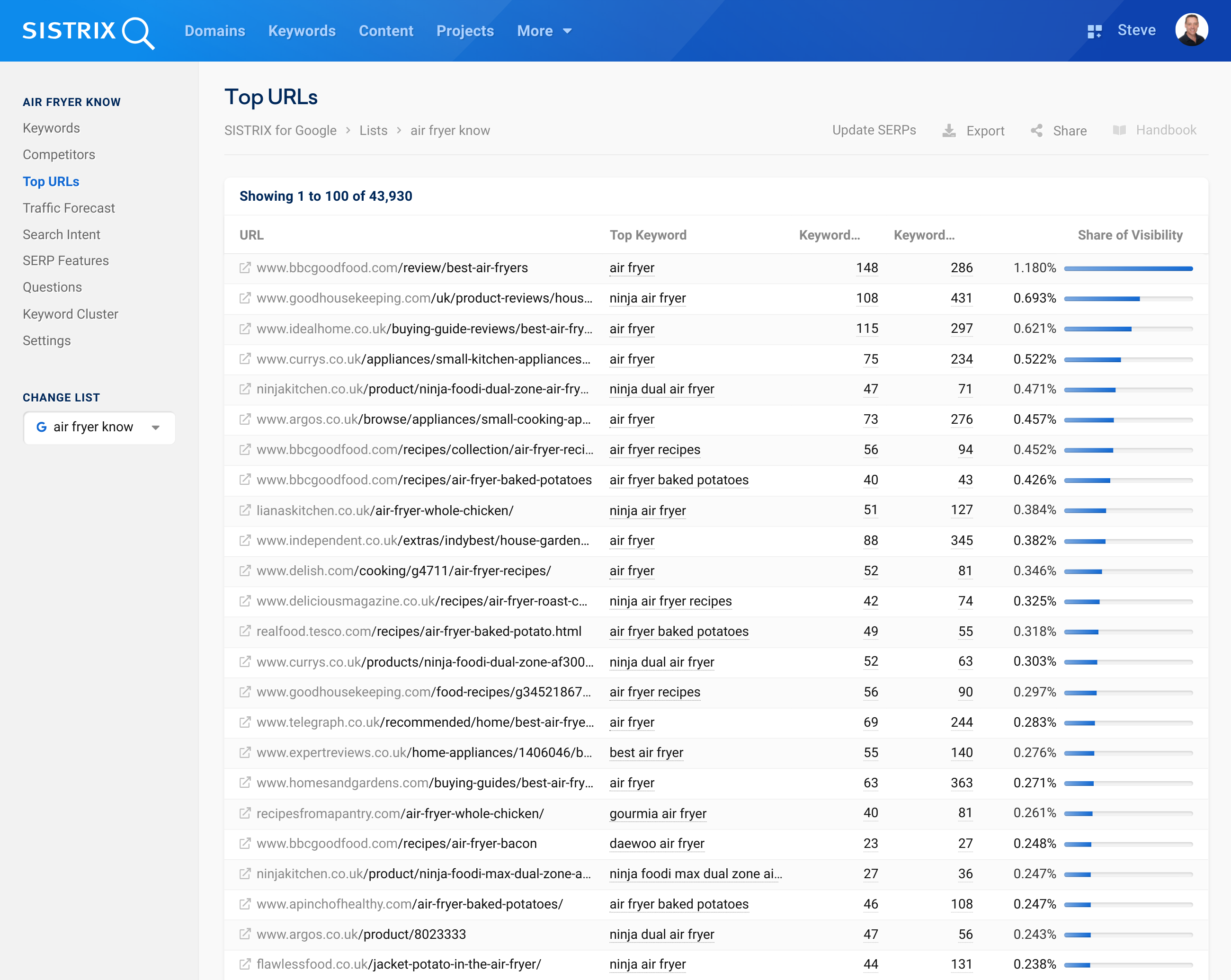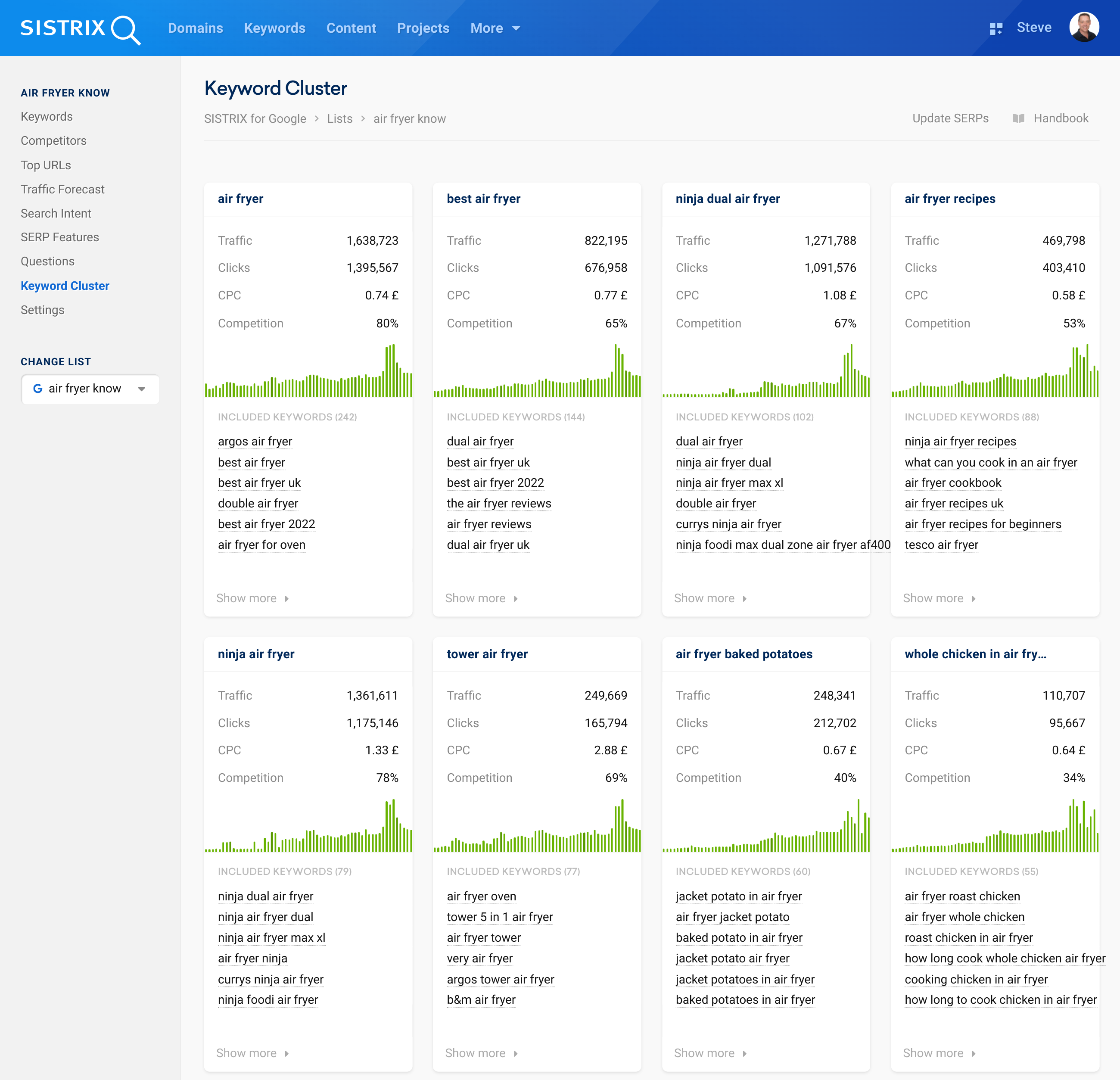Keyword lists allow you to collect keywords in a structured manner in SISTRIX and conduct in-depth analyses based on the data associated with these keywords. We have now further expanded these options. In this changelog entry we show you the new features:
Live index: Immediate access to current data
The listings now use the SISTRIX live index for keyword data and all related information, including Google SERPs . This means you always have access to the latest data available in SISTRIX in the lists.
New feature: Top URLs
In the “Top URLs” navigation area, the lists now offer expanded analysis: The most successful URLs for all keywords in the list are displayed there, sorted by their contribution to the list’s overall visibility index. This allows you to see at a glance which content is performing particularly well on Google in the topic context of the list.

The table is similar to the one from the Domains section, but focuses not just on the top URLs of a specific domain, but on the top-ranking URLs based on the rankings of the keywords in your list.
Improved: Keyword clustering based on Google SERPs
Manually clustering a keyword list with several thousand keywords can be time-consuming and error-prone. That’s why we optimised the automatic clustering of the lists and now base it directly on the Google SERPs for the keywords.

This clustering reflects Google’s understanding of similar and overlapping keywords. This allows you to quickly identify which subject areas require separate pages and which keywords should be covered on these pages.
Extended, 5-year search volume history
In order to reliably assess whether keywords and topics are gaining or losing popularity regardless of seasonal fluctuations , a comprehensive history of search volumes is essential. For this reason, the updated lists in SISTRIX now consistently present a 5-year history of search volumes.
Captured for you: Crawl & update missing SERPs
While the keyword data in the lists is always kept up to date automatically and without your intervention, you now have the opportunity to actively intervene with the SERPs
For some infrequently searched keywords, this data could be up to a month old, while for other, even less searched keywords, it may not yet exist. Within the lists you can now specifically capture and update these SERPs . For more details, see last month’s changelog .